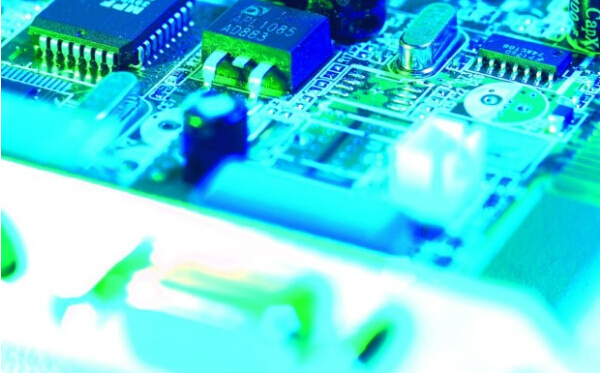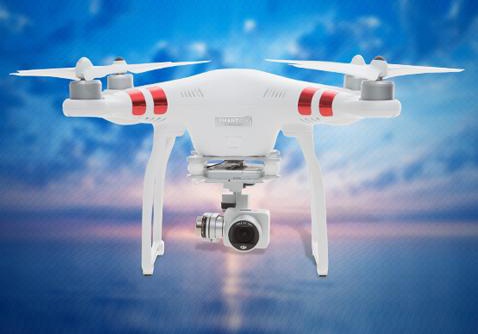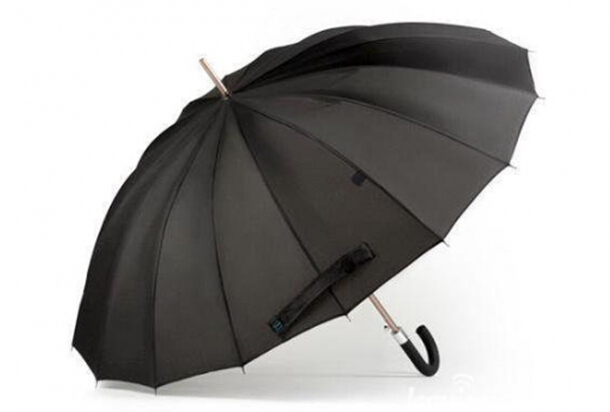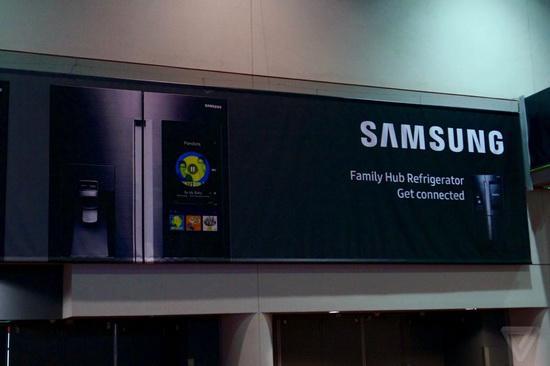Today's core language
The Verge reports that the famous Chinese drone manufacturer DJI Innovation launched this week's new self-blocking software system "GeospaTIal Environment Online" (GEO), which can prevent the UAV from flying into the country. No-fly zone. For more information, please pay attention to the daily electronic core morning newspaper.

I. Internet of Things
1. Microsoft engineers clarify the concept of the Internet of Things, driven by sensors, networks and the cloud. In the "SQL Server Maintenance Art" blog post, Microsoft engineer Mike Wilmot explains his views and opinions on the IoT architecture. In the blog post, the more appropriate statement of the Internet of Things is "things on the Internet," the most typical of which is smart products. The Internet of Things is experiencing an exponential rise curve, and is now immersed in the visual/invisible world of tens of billions of tiny, intelligent and inexpensive sensors that can be connected to the network, through which sensors can interact with each other. Then make smart adjustments based on your and your business needs. We believe that the three core drivers driving the development of the Internet of Things are sensors, international networks and the cloud. As the capabilities of sensors continue to rise, the price of cloud, network and sensors will continue to fall. The biggest advantage of IoT sensors is the measurement of data in the system and the uploading of these measurements to a centralized cloud with deep analysis structures that can calculate huge amounts of data at the speed of light.

Second, the drone
1. Dajiang launched a self-intercepting system for drones. The Verge reports that the famous Chinese drone manufacturer DJI Innovation launched this week's new self-blocking software system "GeospaTIal Environment Online" (GEO), which can prevent the UAV from flying into the country. No-fly zone. The GEO system allows users to know where the drone is restricted, whether it is due to regulatory requirements or security issues. This is the way Dajiang Innovation used to respond to the Federal Aviation Administration (FAA). The FAA has been calling for more rules on drone flight over the past year.

Third, the robot
1. Japanese media: Half of Japan's work will be replaced by robots. According to recent estimates by the Nomura Research Institute and British researchers, about 10 to 20 years later, about half of the work in Japan will be replaced by artificial intelligence (AI) or robots. This is expected to fill the labor gap caused by population decline, but excessive substitution may seriously undermine the diversity of alternative occupations. Nomura Research and two researchers from the University of Oxford collaborated on a survey of 601 occupations in Japan (approximately 42.8 million in labor), and statistics on 66% of the occupations that can be replaced. 49% of the work done by people is likely to be replaced by robots and so on.
2, Disney developed a robot that can climb the wall: has super powers. According to the US technology news website The Verge reported on December 30th, Disney's research institutes have been quietly launching impressive designs. Although there will be some frustrating experiments occasionally, Disney has recently been inspired by engineering. Developed a small four-wheeled robot that can climb the wall. The robot with this "super power" is called VerTIGo, developed by the Swiss Disney Institute in Zurich and the Federal Institute of Technology in Zurich. The robot rolls up to the wall and adjusts the propellers connected to it, so you can climb up and the speed of climbing is amazing.

Fourth, the sensor
1. Sony and Freescale have jointly developed a 100 million pixel sensor. According to foreign website The Phoblograher, Phase One said it has partnered with Sony to launch a new medium format 645 sensor (non-crop) for use with the Phase One XF camera system, in addition to up to 100 million pixels (101,082,464). In addition, there will be 16 bit color depth, 15 dynamic range, ISO 50-12800, exposure time up to 50 minutes, etc., and various new technologies that have appeared in XF systems before, of course, can be applied, including Honeybee Autofocus , VibraTIon Tracking, etc.
Five, intelligent hardware
1, Xiaomi smart umbrella debut: configure the camera. Can you think of what it is like when an umbrella is intelligent? Some experts have found in the National Patent Office that Xiaomi has begun to study smart umbrellas. From the perspective of patent display, Xiaomi Smart Umbrella can better adapt to different needs of users by adjusting the shielding area of ​​the umbrella, avoiding obstructing the line of sight and reducing safety hazards. As for how to realize, the inner layer of Xiaomi intelligent umbrella has an evenly positioned camera for collecting the image of the human eye. According to the human eye image, the direction of the human eye can be determined, thereby judging the human eye. Whether the direction intersects with the opaque umbrella.

Focus on CES
1. Huawei CES publicity poster exposure, or push three new mobile phones. With the annual CES Consumer Electronics Show coming to an end, what kind of new products Huawei will have is naturally attracting attention. Now, Huawei consumer BG officially released a new product preheating poster on the official Weibo, announcing that it will launch new products at this exhibition. Although it is still unclear the specific details of Huawei's new product, some netizens broke the news that Huawei will release Huawei Mate 8 and two new products at this CES, which may be the glory X3 and the new viewing board.
2. Samsung CES will be exhibiting a smart refrigerator equipped with a huge touch screen. According to The Verge, the CES 2016 Electronic Consumer Show is about to be held, and advertisements have already begun to be placed in the venue. One of the Samsung refrigerator advertising banners is very eye-catching because it has a huge touch screen on the refrigerator. As can be seen from the banner, the top of the right side of the Samsung refrigerator is almost filled by the touch screen. The application content on the screen includes calendar, weather forecast, news, post-it notes, etc., in line with Samsung's smart refrigerator development route in recent years. . However, the bottom of the screen even has a capacitive button similar to Android, so it is not certain whether it is the actual product design or concept map. Previously, Samsung introduced a smart refrigerator product with a maximum of 8-inch screen. It is expected that Samsung will launch this flagship refrigerator product at the CES 2016 show next week. The price of the previous series will cost at least US$4,000 (about RMB 26,000).

A rice cooker or rice steamer is an automated kitchen appliance designed to boil or steam rice. It consists of a heat source, a cooking bowl, and a thermostat. The thermostat measures the temperature of the cooking bowl and controls the heat. Complex rice cookers may have many more sensors and other components, and may be multipurpose. Cooking rice has traditionally required constant attention to ensure the rice was cooked properly, and not burnt. Electric rice cookers automate the process by mechanically or electronically controlling heat and timing, thus freeing up a heating element on the cooking range that had to be otherwise occupied for rice cooking. Although the rice cooker does not necessarily speed up the cooking process, with an electric rice cooker the cook's involvement in cooking rice is reduced to simply measuring the rice, preparing the rice properly and using the correct amount of water. Once the rice cooker is set to cook, the rice will be cooked with no further attention.
Features:
For modern home rice cookers, the smallest single-person model cooks 1 rice cup (180 ml), whereas large models can cook 10 cups. Commercial models can cook 20 or more cups. As a possible source of confusion, model specifications and names may list either cooked or uncooked capacity. Rice roughly doubles in size during cooking; therefore, a 10 cup (uncooked) rice cooker can produce up to 20 cups of cooked rice. The prices vary greatly, depending on the capacity, features, materials used, and the country of origin.
The majority of modern electric rice cookers are equipped with a stay-warm or keep-warm feature, which keeps the rice at an optimal temperature for serving without over-cooking it. Some gas cookers also have electric stay-warm mechanism. However, the usefulness of this feature degrades over time, a microwave may be more energy efficient or better suited to reheat rice that will sit longer than four hours.
Some rice cookers use induction heating, with one or more induction heaters directly warming the pot. This can improve energy efficiency.
Most modern rice cookers use aluminium for the inner cooking bowl. There are some models that use stainless steel instead of aluminium. Various other materials, such as copper, pure carbon, ceramic, and diamond powder coating, may be used for higher heat conductivity or better taste.
The pressure-cooking models can raise the water's boiling point higher, e.g., from 100 °C at 1.0 atm up to about 110 °C at 1.4 atm, which speeds cooking. The pressure-cooking models can also be used in high altitude areas, where the boiling temperature is below 100 Celsius. Pressure cookers are also suitable for cooking brown rice (which contains oils and bran fiber that cook differently from pure white rice starch). Some pressure rice cookers have a varying pressure control mechanism (named the "dual-pressure" method) that creates repeated pressure/release cycles during the cooking.
There also exist mechanisms to collect and return the boiled over liquid to the inner rice bowl.
Many cookers now have microprocessor-controlled cooking cycles, which are often used to adjust for rice and cooking type.
Applications
Rice cookers are typically used for the preparation of plain or lightly seasoned rice. Each rice cooker model may be optimized to cook a certain type of rice best. For example, most Japanese rice cookers are optimized for cooking Japanese rice and may not be the best for other types of rice[citation needed], although cooking time can be lengthened simply by more water.
The typical method of cooking long grain rice is boil-and-strain and/or steaming method. The absorption method used in Japanese rice cookers will produce slightly different texture and taste, usually stickier rice.
Brown rice generally needs longer cooking times than white rice, unless it is broken or flourblasted (which perforates the bran).
Different varieties of rice need different cooking times, depending on their grain size, grain shape, and grain composition. There are three main types of Asian rice: Oryza sativa subsp. indica, i.e., Indian rice (long grain rice, e.g., basmati rice and Thai jasmine rice), O. sativa subsp. javanica, i.e., Java rice (large grain rice) and O. sativa subsp. japonica, i.e., Japanese rice (medium grain rice, e.g., Calrose rice, short grain rice, e.g., most Japanese rice and risotto rice).
African rice, Oryza glaberrima, is an entirely separate species, but can be cooked in the same way. Zizania is not even in the same genus, although it is often called a rice (or "water oats"); it, too, can also be cooked in a rice cooker.
A rice cooker can be used to cook many boiled or steamed granular foods, such as pot barley, bulgar wheat, and dal. Provided the ingredients have similar cooking times, a rice cooker can cook mixtures such as khichdi. Some rice cookers can be used as automated couscoussiers, cooking couscous and a stew simultaneously.
Rice Cooker
Rice Cooker,Drum Rice Cooker,Deluxe Rice Cooker,Straight Rice Cooker
Guangzhou Taipeng Electrical Appliances Technology CO., LTD. , https://www.taipengelectrics.com